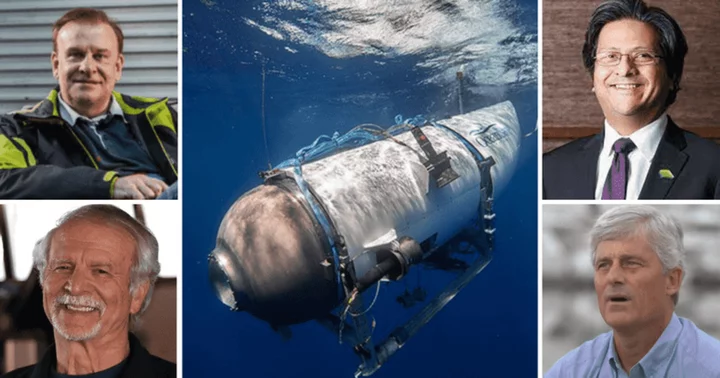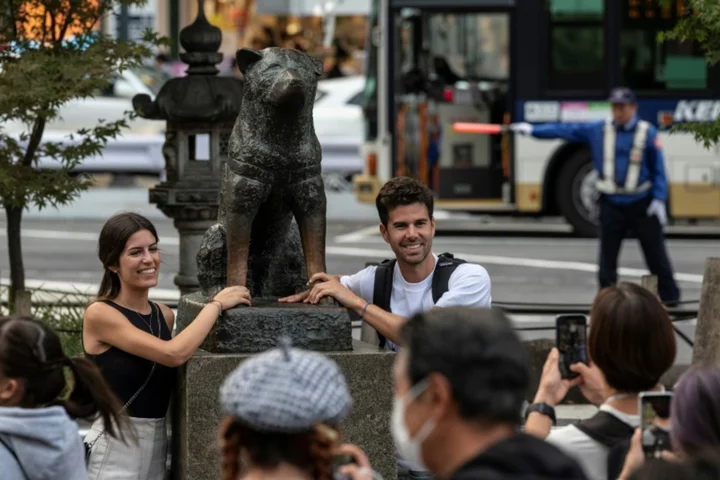BOSTON, MASSACHUSETTS: A former employee of OceanGate Expeditions, the private company whose submersible vanished on a trip to the Titanic wreck, had previously raised alarms about the insufficient “quality control and safety” procedures of the vessel. OceanGate’s submarine known as Titan was taking a team of five people to view the famous wreck when it went missing off the North American coast in the Atlantic Ocean on Monday, June 19, 2023.
The Titan was launched around 4 am on Sunday, June 18, but lost communication with the sub's mothership MV Polar Prince, an hour and 45 minutes into the two-hour descent. The Vessel is believed to have one crew member and four other passengers on board, including British billionaire Hamish Harding, French explorer Paul-Henri Nargeolet, OceanGate CEO Stockton Rush, Pakistan millionaire Shahzada Dawood, and his son Suleman. An extensive search has been launched to locate the Titan, with C-130s and P-8s from the US and Canada assisting in the search operations in the remote area of the ocean.
Who is David Lockridge?
Lockridge was the Director of Marine Operations for the Titan project, His role included overseeing safety on the vessel. In 2018, he was fired by Oceangate after he expressed concern about the submersible's safety. That same year, the business launched a lawsuit against Lochridge, alleging he breached the terms of his employment agreement by disclosing sensitive material with the Occupational Safety and Health Administration when he lodged a whistleblower complaint with the organization.
In response to OceanGate's lawsuit, Lockridge filed a countersuit, alleging that he had been unlawfully fired and that his actions were intended to ensure the safety of passengers on the Titan.
Lochridge claimed in his lawsuit that he had asked OceanGate to carry out more hull testing after expressing worries about the Titan's safety. “Now is the time to properly address items that may pose a safety risk to personnel. Verbal communication of the key items I have addressed in my attached document has been dismissed on several occasions, so I feel now I must make this report so there is an official record in place,” read the preamble of his reports, according to the lawsuit.
The report then went on to detail “numerous issues that posed serious safety concerns,” including Lockridge’s fear that "visible flaws" in the carbon fiber provided to OceanGate increased the likelihood of small defects turning into bigger rips during "pressure cycling."
Why did Oceangate refuse to conduct non-destructive testing?
He mentioned that a scale replica of the hull that had previously been examined showed "prevalent flaws." Carbon fiber composites can be stronger and lighter than steel, making a submersible inherently buoyant, but they can also be vulnerable to unexpected breakdown under stress. At that time, Lochridge had requested the Titan's hull needed to undergo non-destructive testing to confirm that it was a "solid and safe product." But he was informed that such testing was not practicable and OceanGate would instead rely on their highly praised acoustic monitoring system.
The company asserted that its internally developed technology employs acoustic sensors to listen for the telltale noises of the carbon fibers in the hull disintegrating in order to offer "early warning detection”.
But Lochridge expressed concern that the system would only give "milliseconds" of notice prior to a catastrophic implosion since it might not detect problems until the ship is plummeting. In 2018, he attended a number of meetings "regarding the quality control and safety of the Titan, particularly OceanGate's refusal to conduct critical, non-destructive testing of the experimental design of the hull."
During one meeting, he discovered that the viewpoint was only built to a certified pressure of 1,300 meters despite OceanGate intending to take passengers down to 4,000 meters. The court documents also said Lochridge at that time cautioned that the vessel was not capable of descending to the extreme depths necessary to view the Titanic wreckage.
'The paying passengers would not be aware'
Lockridge’s filings further stated that hazardous flammable materials were being used within the submersible. "The paying passengers would not be aware, and would not be informed, of this experimental design, the lack of non-destructive testing of the hull, or that hazardous flammable materials were being used within the submersible. Discouraging whistleblowers from coming forth with quality control issues and safety concerns that threaten the safety of innocent passengers would undermine and jeopardize the public policy, and put innocent passengers at increased risk,” the complaint read, according to Daily Mail. The case was ultimately settled out of court in November 2018.









